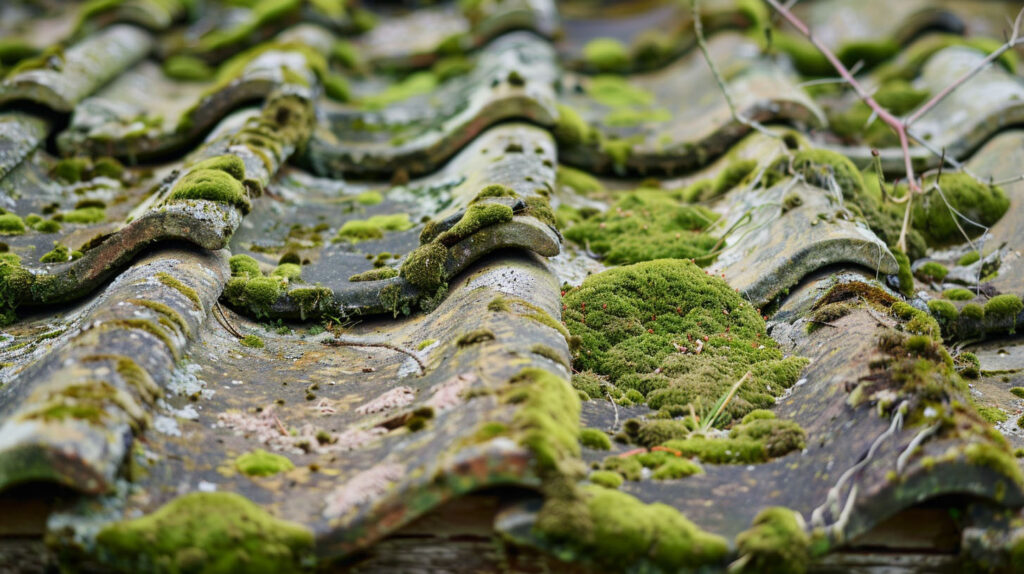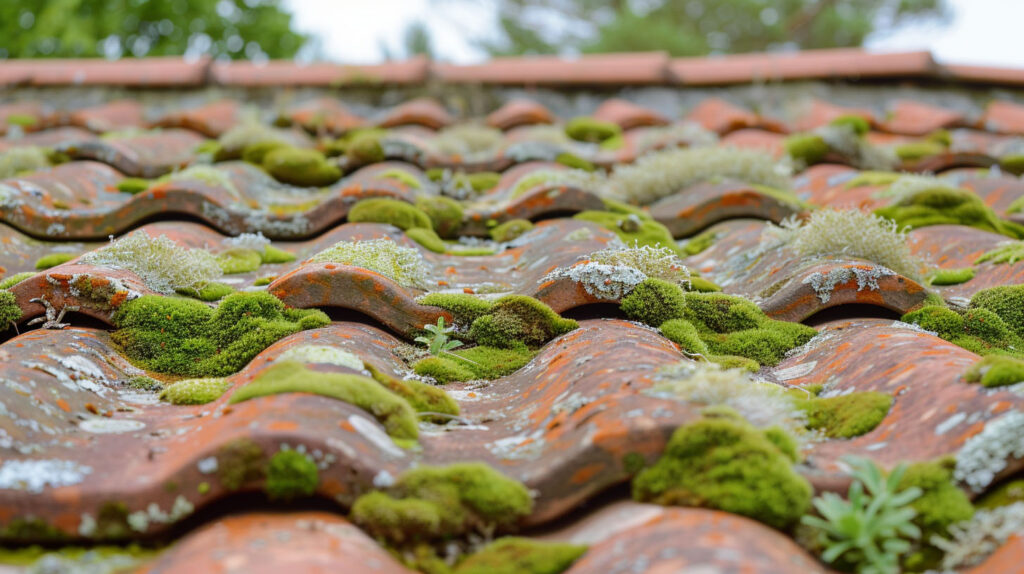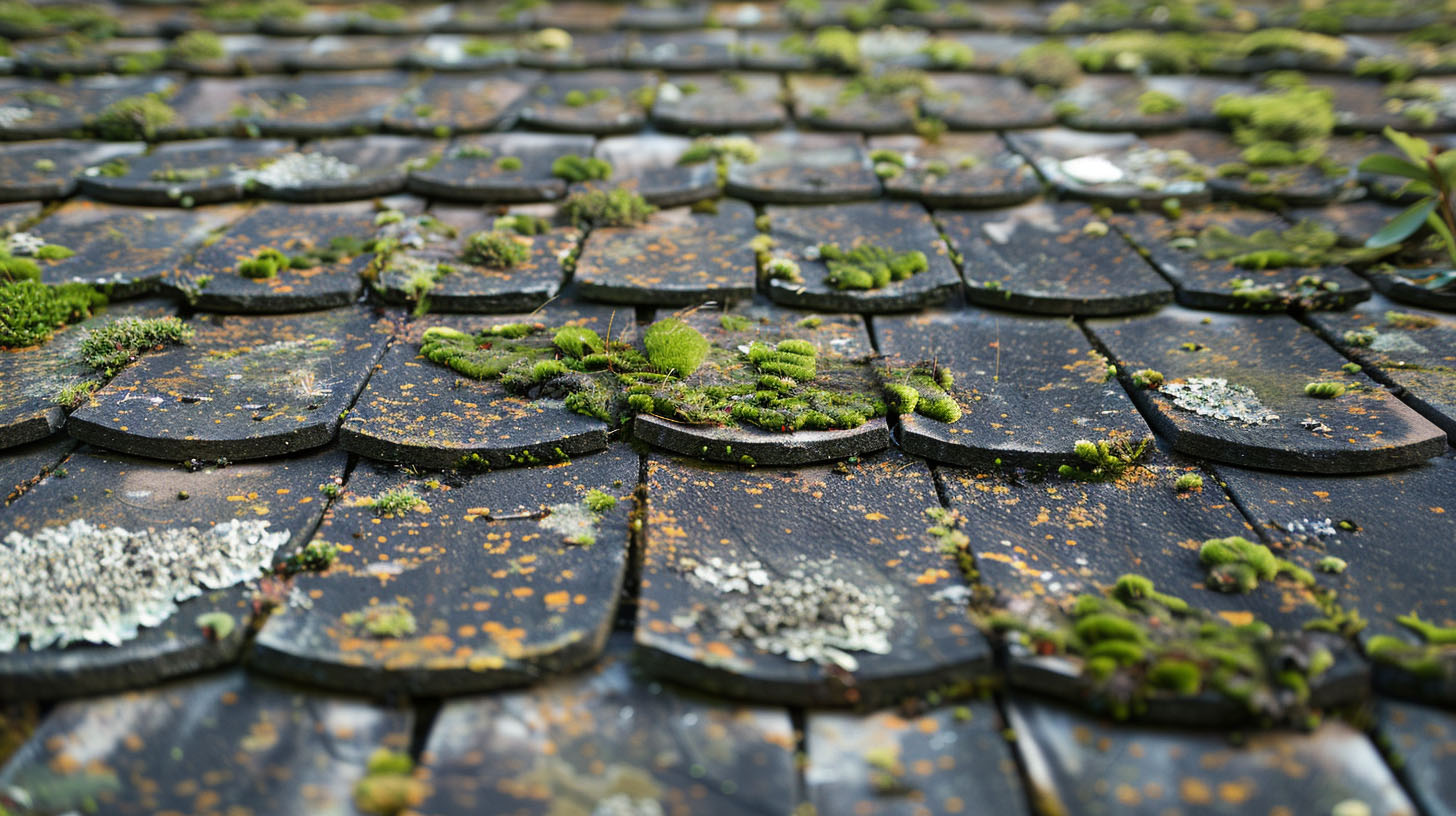How Algae Growth Can Affect Your Roof’s Appearance
Your roof’s appearance plays a vital role in your home’s overall curb appeal. In Burbank, CA, algae growth is a common issue that causes dark streaks and an unsightly appearance. Left unchecked, these growths can compromise the aesthetic and longevity of your roof. Thankfully, Specialist Roofing & Repair offers expert solutions to combat this problem and preventative strategies to keep it from occurring again. Understanding algae’s impact lets you take proactive steps for regular roof maintenance and algae removal, ensuring your roof stays in top condition.
What Causes Algae Growth on Roofs in Burbank, CA
Algae thrive in environments where moisture and warmth coexist. In humid areas like Burbank, CA, these conditions are abundant due to high humidity levels and frequent sunny days. Moist environments, especially shaded sections of a roof, trap water, making ideal for algae proliferation.
Wind-blown spores settle on roofs and germinate, feeding off limestone fillers commonly found in asphalt shingles. The combination of moist surroundings and organic nutrient sources ensures a quick spread, making roof algae a persistent challenge for homeowners in this area.
Climate and Environmental Factors Contributing to Algae
The combination of high humidity levels and limited sunlight creates an ideal environment for roof algae growth. Areas surrounded by overhanging tree branches experience moisture retention, exacerbating the problem. Roofing materials, particularly asphalt shingles with limestone filler, are particularly susceptible to discoloration from gloeocapsa magma. Regular roof maintenance, involving inspections and cleaning, can combat these factors effectively. By implementing proactive measures, homeowners can significantly reduce the chances of unsightly streaks and preserve their roof’s appearance for years to come.

Roofing Materials Most Prone to Algae Growth
Certain roofing materials are more susceptible to algae growth, particularly in humid environments. Asphalt shingles, often containing limestone filler, can create ideal conditions for gloeocapsa magma, leading to unsightly streaks. Additionally, roofs with a lack of direct sunlight or overhanging tree branches trap moisture, further enhancing algae proliferation. Regular inspections and proactive measures, such as installing copper strips or zinc granules, can help mitigate these issues and protect the roof’s appearance from potential long-term damage.
How to Identify Algae on Your Roof
Roof algae commonly appear as dark or black streaks across sections of your roof. These discolorations are particularly noticeable on older or neglected roofs. Regular inspections can help you catch these streaks before they spread extensively across the roof surface.
Unlike moss or mold, algae streaks lie flat against the roof instead of forming patches or thicker growths. Early identification is essential to prevent costly maintenance later. By staying vigilant, you can address algae growth promptly and restore your roof’s appearance efficiently.
Visual Signs of Algae Versus Moss and Mold
Distinguishing between algal blooms, moss, and mold is essential for effective roof maintenance. Algae often appears as dark streaks or unsightly black or green patches, primarily found in humid environments. In contrast, moss tends to create a thicker, fuzzy layer, indicating moisture retention and potential structural impacts. Mold can manifest as a color variation, often presenting as irregular spots. Regular inspections can help identify these visual signs early, allowing homeowners to implement proactive measures for effective roof algae removal and maintain curb appeal.
Areas Most Commonly Affected by Algae
Certain areas of a roof are particularly susceptible to algal bloomsgrowth due to environmental conditions. Regions that do not receive adequate sunlight, such as shaded spots beneath overhanging tree branches, create a perfect environment for moisture retention. The north-facing slopes of roofs also tend to remain damp longer, allowing gloeocapsa magma to thrive. In humid environments, valleys or low-lying sections can trap moisture, leading to unsightly streaks and potential further damage if not addressed with regular roof maintenance and inspections.

The Impact of Algae on Your Roof’s Appearance
Beyond cosmetics, algal blooms indirectly trap moisture that can lead to structural damage. Prolonged algal bloomspresence may prompt costly repairs and affect the longevity of your roof. Addressing algae early and using preventative measures preserves the aesthetic quality of your roof while protecting its structural integrity.
Staining, Discoloration, and Curb Appeal
An unsightly appearance often emerges from roof algal bloomsgrowth, resulting in noticeable staining and discoloration. The dark streaks caused by gloeocapsa magma create an uninviting look, diminishing the overall curb appeal of a property. Homeowners are likely to find that the aesthetic deterioration affects not only their satisfaction but also potential property value. Regular roof maintenance and proactive measures, such as professional roof cleaning services, are essential to mitigate this issue and restore a roof’s pristine appearance, ensuring long-term beauty and appeal.
Effects on Property Value and Neighborhood Perception
Algae growth can significantly diminish both property value and neighborhood perception. An unsightly roof laden with dark streaks may deter potential buyers, leading to lower offers and prolonged market time. Moreover, neighbors may view a home with poor roof maintenance unfavorably, impacting community aesthetics. Engaging a professional roof cleaning service can restore the roof’s appearance, enhancing curb appeal and alleviating concerns over moisture issues and potential structural damage. Proactive measures ensure a well-maintained roof contributes positively to property value and neighborhood image.
What’s Next
In summary, algae growth on your roof can significantly impact its appearance and overall value. The unsightly stains and discoloration not only affect curb appeal but can also alter how your property is perceived in the neighborhood. By understanding the causes and signs of algal blooms growth, you can take proactive measures to maintain your roof’s aesthetics and integrity. If you’re dealing with algae issues, don’t hesitate to reach out to us at Specialist Roofing & Repair. We work with trusted brands like Owens Corning, Polyglass, GAF, CertainTeed, and ASC to provide expert solutions tailored to your needs. Get quotes today and ensure your roof looks its best!

Frequently Asked Questions
What does algae do to roofs?
Algae growth retains moisture on roof surfaces, accelerating material degradation and potentially causing structural damage over time. Regular maintenance can prevent further damage, ensuring your roof’s longevity and preventing costly repairs.
What does algae look like on a roof?
Algae often presents as dark or black streaks on the roof surface, most commonly caused by gloeocapsa magma. These unsightly streaks detract from your home’s curb appeal, signaling the need for professional cleaning or preventative measures.
Read our blog: Does a Flat Roof Need a Different Maintenance Plan?



